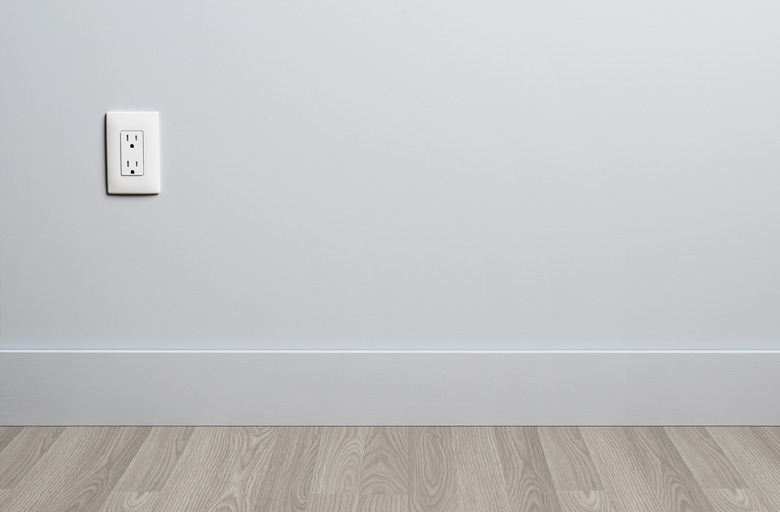How To Cap Off An Electrical Outlet
You may need to cap off an electrical outlet for a number of reasons. You may be building a new bookcase or cabinet or you may be concerned that your toddler finds the outlet too interesting for comfort. It isn't difficult to remove an electrical outlet, but the procedure is different depending on whether or not you remove the wires. You can leave the wires where they are, but if you do that, you need to cap them and cover the electrical box with a removable plate. The code requires the wires to remain accessible, so you'll have to plan for that when building your bookcase or cabinet.
If you don't want to go to all the trouble of removing the outlet, you can always render it unusable by inserting a safety plug into each of the receptacles. Children can't remove safety plugs, and the outlet will remain out of service until you remove the plugs yourself.
Find Where the Outlet Is Connected
Find Where the Outlet Is Connected
Before you start the procedure for removing an outlet, you need to do two things. The first is determine from where the outlet draws its power, which may be another outlet, a switch or the electrical panel itself. The second is to turn off the breaker controlling the circuit so you can disconnect wires safely. If the outlet you want to remove is at the end of a circuit, it's safer to disconnect the wires from the device feeding it than it is to leave live, unused wires in the wall. However, if anything is connected downstream of the outlet, the wires need to stay where they are, and to maintain continuity, you'll need to splice them together in the receptacle box after you remove the outlet.
Remove an Electrical Outlet at the End of a Circuit
Remove an Electrical Outlet at the End of a Circuit
After you've found the device to which the outlet you want to remove is connected and turned off the breaker, start by disconnecting the outlet wires from that device. If the device is an outlet or a switch, the wires may be pushed into locking holes on the back of the device. You can usually release the wires from a push wire outlet or switch by inserting a flat-head screwdriver into a slot near the wire and pulling out the wire. In many cases, though, it's easier to simply cut the wires with wire snips. Screw a wire cap tightly onto each wire you remove and push it into the back of the electrical box.
Before you remove the outlet itself, it's always a good idea to check the terminals with a voltage tester before you start working. You may feel certain the breaker is off and you disconnected the outlet, but are you 100 percent sure? A small miscalculation can have serious consequences.
After disconnecting the outlet by extracting the wires from the locking holes or removing them from the terminal screws, cap each one tightly with a wire cap. Don't use electrical tape. After covering all the wires, replace the outlet cover with a blank one, screwing it into the same holes to which the outlet cover was attached. This cover must remain accessible even though the wires are dead. You can remove it only if you remove the wires.
Remove a Middle-Run Outlet
Remove a Middle-Run Outlet
If another device is connected to the outlet you want to cap, you don't want to disconnect the wire feeding the outlet. Instead, after removing the outlet, splice the wires in the box together and cap them. Twist the black wires together, then twist the white wires and finally the bare ground wires. Install a blank cover plate and make sure you cut a hole in any cabinet or bookshelf you place in front of the outlet to keep the outlet accessible.
